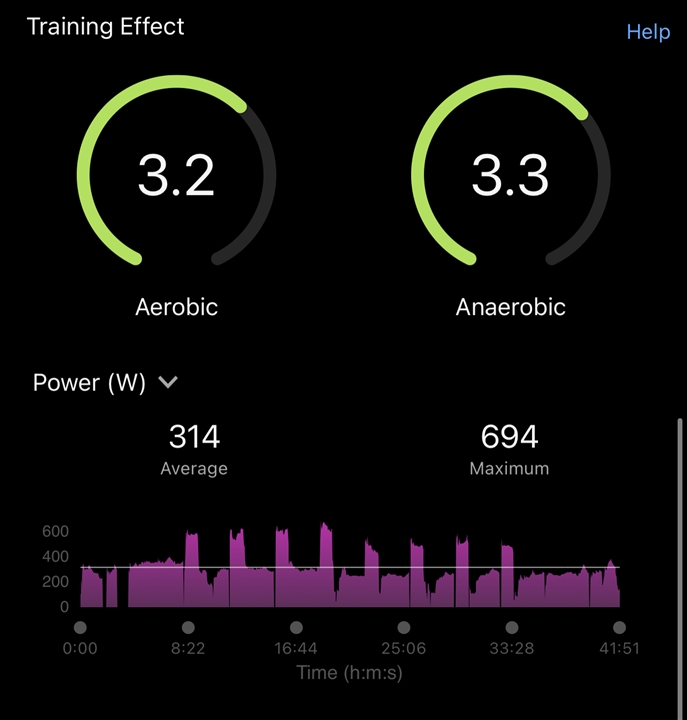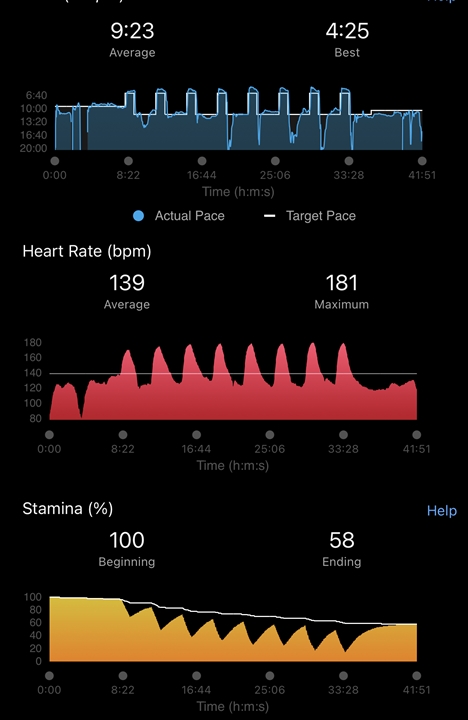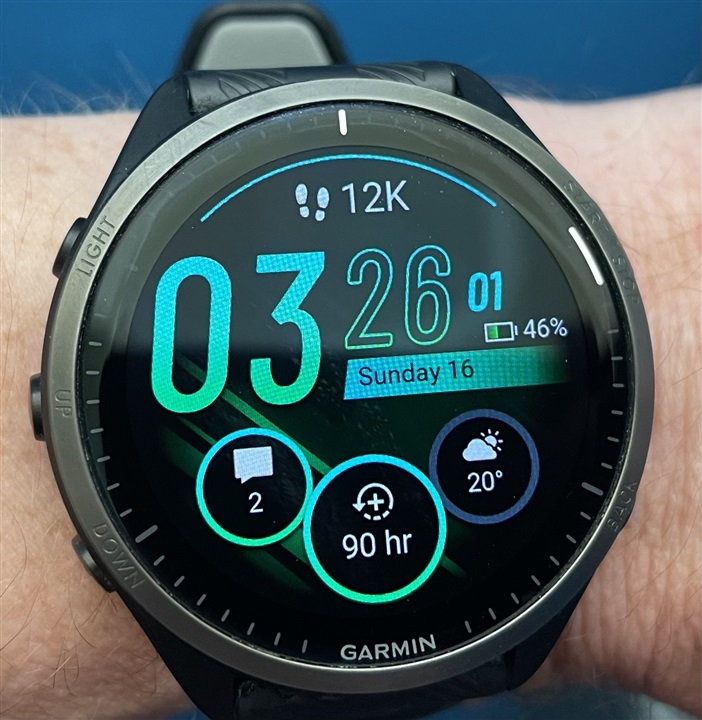
I did an anaerobic workout as a daily suggestion. 3x. 4x40 seconds at 6m10 a mile.
This sounded about right, I ended up doing it at around 5m45 a mile. There was a 3 minute rest between each rep at 10 mins a mile or so.
All went well, however, the workout shows as tempo in the exercise load in training status. Is this because the daily workout wasn’t hard enough (certainly felt hard) or it’s incorrectly categorised it.
I was wearing a garmin dual hr strap and the data looks good, peaks in all the right places. Rests at around 125 and repeats at around 170.
This is a pain as these workouts are making my anaerobic lower and my high aerobic higher. This then skews the data for the daily workouts in favour of anaerobic.
Update 1
Randomly it’s suggested the same workout tomorrow. I will try it again and see what happens. This time it wants me to do it a little faster though.
update 2.
As no one has commented, I have found the issue. It appears that I may be getting high aerobic credits for the rests between sets.
either garmin has these too fast or I’m running faster than I should.






